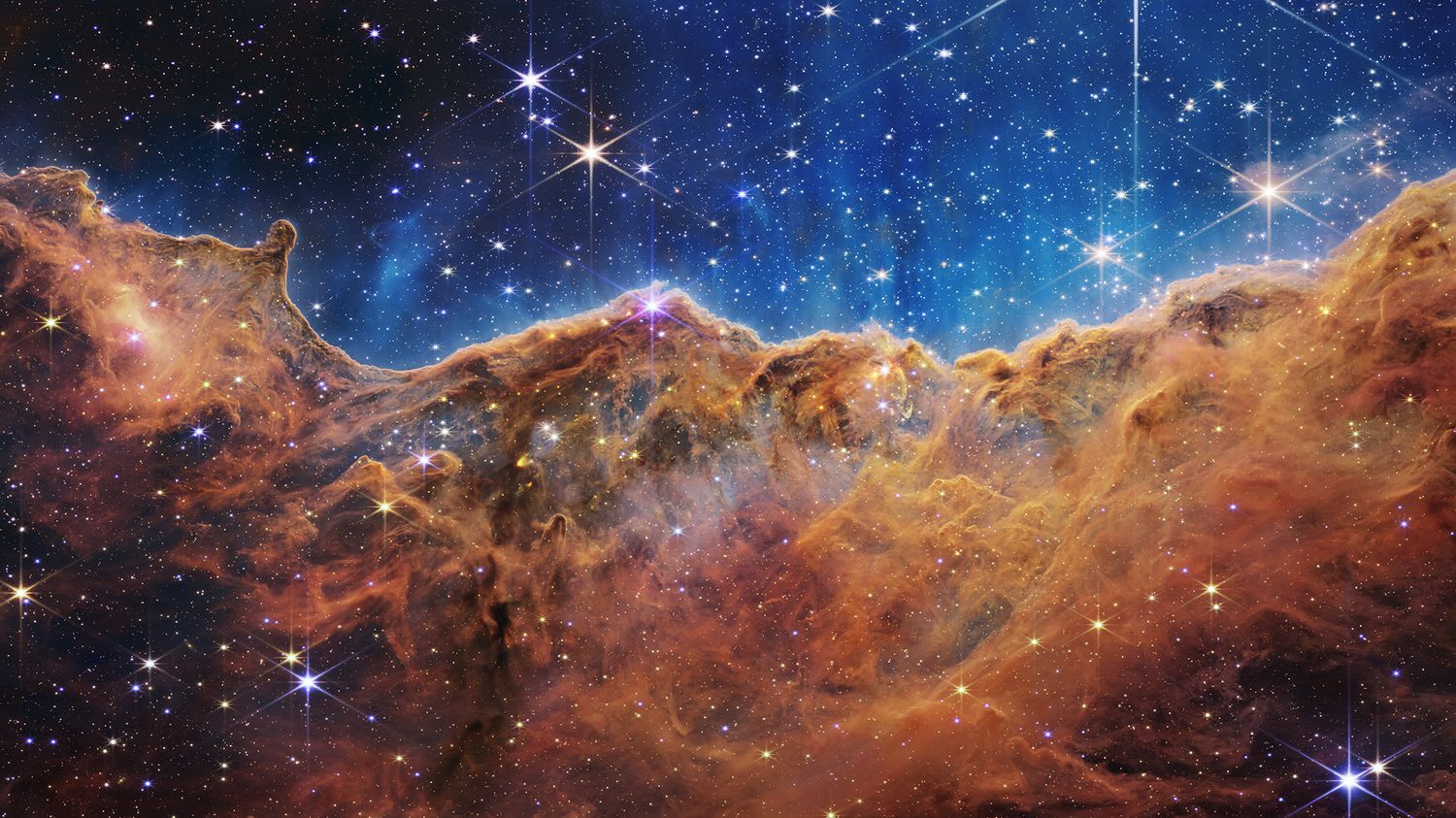Have you ever seen stardust? The 32nd edition of “Nights of the Stars” takes place on August 5, 6 and 7. The opportunity to observe the stars with the naked eye, with binoculars or even using a telescope. But none will be as precise as the James Webb Space Telescope (JWST), the most powerful in the world, which makes it possible to observe space in a multitude of details. One of its latest images, released Tuesday, August 2 by NASA, shows star dust and star-forming areas in the Cartwheel galaxy.
The James Webb telescope, the result of collaboration between the American, European and Canadian space agencies, should make it possible to see further into space. And therefore to go back further in the past to hope to understand the formation of the Universe. The comparison with its predecessor, the Hubble telescope, which had already taken similar shots, allows us to appreciate this technological leap. Franceinfo asked astrophysicist Eric Lagadec, stardust specialist and president of the French Society of Astronomy and Astrophysics, to compare the pictures of James Webb and Hubble.
The Cartwheel Galaxy
The Cartwheel Galaxy is 500 million light-years from Earth. The two space telescopes were able to immortalize it, but the shot taken by James Webb shows much more detail than that of Hubble.
In the image provided by Hubble in 2010, we guessed without seeing them precisely, in the black areas inside the large blue circle, dust, the result of a collision between the Cartwheel galaxy and another galaxy. “Compression of dust and gas leads to the formation of new stars”explains Eric Lagadec.

James Webb’s image shows these gas and dust dense areas much more explicitly. “With infrared, we can now observe dust. Sometimes we can even see through it, but it depends on the conditions and the characteristics of this dust”, analyzes Eric Lagadec. Finally, from the almost entirely black background of the Hubble image, we move on to a background decorated with dozens of distant galaxies, made visible by James Webb.

The Southern Ring Planetary Nebula
Its scientific name is “NGC 3132”, but it is rather called the “Austral Ring Nebula” or “Eight Shards Nebula”. This expanding gas cloud is located at a distance of about 2,000 light-years. It is therefore one of the closest known planetary nebulae to Earth, according to NASA.
The central star visible in the middle in the Hubble image, released in 1998, is dying. “As a result, it contracts and heats up. This will excite the gas all around and give different colors picked up by Hubble”, describes Eric Lagadec.

In James Webb’s image, the red and more distant parts are actually colder gas, because it has already been expelled by the star, and dust. It is invisible with Hubble, but JWST’s infrared technology makes it possible to represent this gas.

The Carina Nebula
You would think you could see steep mountains in these images. It is actually one end of the Carina Nebula. Called “cosmic cliffs”, these bewitching forms are located at the edge of a gigantic gaseous cavity within NGC 3324, located about 7,600 light years away, we learn on the website of James Webb.
The shades of yellow and red in the two images again represent areas of dust and gas, where new stars form, explains Eric Lagadec.

James Webb’s image is so precise that it allows you to observe a lot of detail. Places with more or less dust stand out in the image, like the strata of a mountain. “This picture is beautiful!” rejoices Eric Lagadec, who admits to having made it his mobile phone wallpaper.

Stephan’s Quintet
Stephan’s Quintet is a group of five galaxies located in the constellation Pegasus. The interaction between these galaxies creates star formation zones, deciphers Eric Lagadec. “With Hubble, we see more stars and hot gas, with Webb more dust and cold gas”, describes the astrophysicist.

The image below is the largest to date by James Webb, and covers about one-fifth the diameter of the Moon. It contains more than 150 million pixels and is built from nearly 1,000 separate image files, according to the telescope’s website.

What impresses above all is the quantity of galaxies visible in the distance. Quantities of celestial objects which remain to be discovered.
